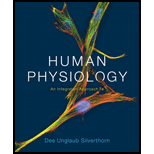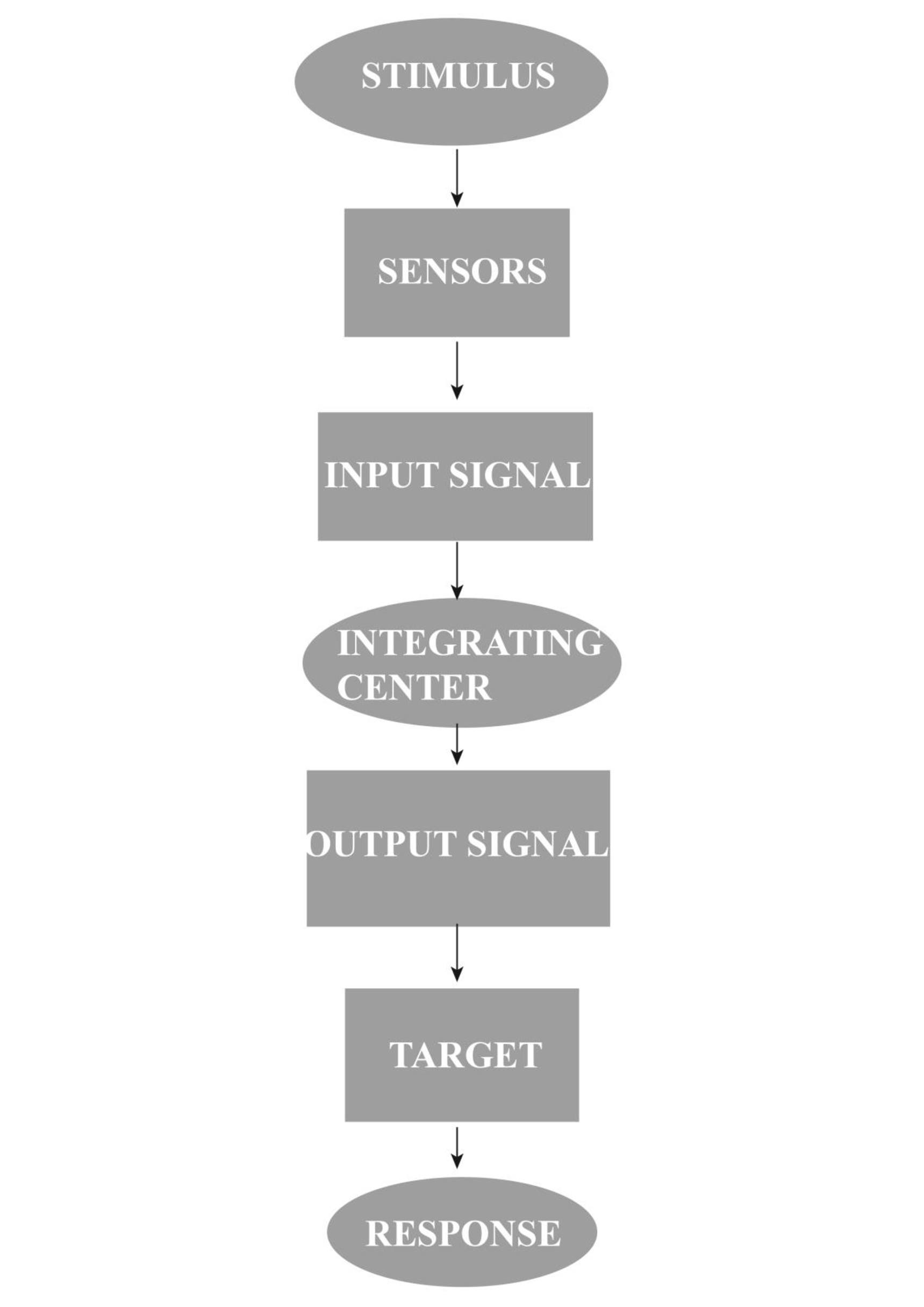
Concept explainers
List the general steps of a reflex pathway, including the anatomical structures in the nervous system that correspond to each step.
To determine: The general steps that involved in a reflex pathway along with the anatomical structures that are involved at each step.
Introduction: Reflex actions are generated involuntarily in the body against stimuli. Information about such actions is processed and accordingly the response action is done by the body in very short time. Reflex actions are generally seen in situations involving negative feedback.
Answer to Problem 1CC
Pictorial representation: Fig. 1 represents the general steps involved in a reflex pathway.

Fig. 1: Steps along with the organs involved in a reflex pathway
Explanation of Solution
In a reflex pathway different steps are involved for conduction of signals. Different anatomical structures are involved at each step.
- Step 1: Receiving of signals (stimulus) and activation of receptors
Signals for different stimuli are received by the sensory receptors that are present on the different sensory organs of the body.
- Step 2: Conduction of input signals
Signals received by the receptors are passed on to the sensory neurons. These signals pass through the afferent pathway towards the spinal cord.
- Step 3: Signal integration
The incoming signal in case of reflex action is integrated and processed at the spinal cord itself which serves as integrating centre. Here the signals for the needed response is generated and passed on towards the target site. From the spinal cord, signal is also transferred to the brain for further processing.
- Step 4: Conduction of output signals
Response signals generated in at the integration centre are sent back to the target site through the efferent neurons. These signals make the target organs to take the necessary action.
- Step 5: Response
Response for the stimuli is done by the target organ. Signals for the response travel through the efferent neurons to the target site and the required action is performed.
It is important to note that in reflex pathway, although the incoming stimuli signals are transferred to the brain for complete processing but the response signal for the incoming stimuli is generated at the spinal cord itself for quick response action.
Want to see more full solutions like this?
Chapter 13 Solutions
Human Physiology: An Integrated Approach (7th Edition)
- What are the roles of DNA and proteins inside of the cell? What are the building blocks or molecular components of the DNA and proteins? How are proteins produced within the cell? What connection is there between DNA, proteins, and the cell cycle? What is the relationship between DNA, proteins, and Cancer?arrow_forwardWhy cells go through various types of cell division and how eukaryotic cells control cell growth through the cell cycle control system?arrow_forwardplease make the drawing and steps of whats it asking. thank you!arrow_forward
- please fill in empty spots. thank you!arrow_forwardplease fill in the empty sports, thank you!arrow_forwardIn one paragraph show how atoms and they're structure are related to the structure of dna and proteins. Talk about what atoms are. what they're made of, why chemical bonding is important to DNA?arrow_forward
- What are the structure and properties of atoms and chemical bonds (especially how they relate to DNA and proteins).arrow_forwardThe Sentinel Cell: Nature’s Answer to Cancer?arrow_forwardMolecular Biology Question You are working to characterize a novel protein in mice. Analysis shows that high levels of the primary transcript that codes for this protein are found in tissue from the brain, muscle, liver, and pancreas. However, an antibody that recognizes the C-terminal portion of the protein indicates that the protein is present in brain, muscle, and liver, but not in the pancreas. What is the most likely explanation for this result?arrow_forward
- Molecular Biology Explain/discuss how “slow stop” and “quick/fast stop” mutants wereused to identify different protein involved in DNA replication in E. coli.arrow_forwardMolecular Biology Question A gene that codes for a protein was removed from a eukaryotic cell and inserted into a prokaryotic cell. Although the gene was successfully transcribed and translated, it produced a different protein than it produced in the eukaryotic cell. What is the most likely explanation?arrow_forwardMolecular Biology LIST three characteristics of origins of replicationarrow_forward
 Human Biology (MindTap Course List)BiologyISBN:9781305112100Author:Cecie Starr, Beverly McMillanPublisher:Cengage Learning
Human Biology (MindTap Course List)BiologyISBN:9781305112100Author:Cecie Starr, Beverly McMillanPublisher:Cengage Learning Human Physiology: From Cells to Systems (MindTap ...BiologyISBN:9781285866932Author:Lauralee SherwoodPublisher:Cengage Learning
Human Physiology: From Cells to Systems (MindTap ...BiologyISBN:9781285866932Author:Lauralee SherwoodPublisher:Cengage Learning- Surgical Tech For Surgical Tech Pos CareHealth & NutritionISBN:9781337648868Author:AssociationPublisher:Cengage





